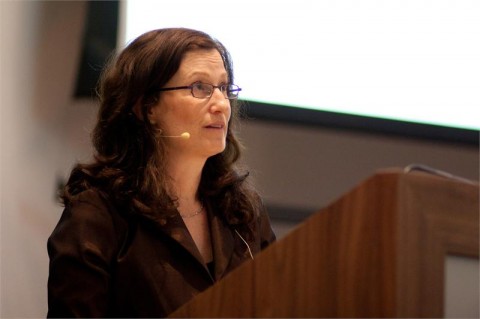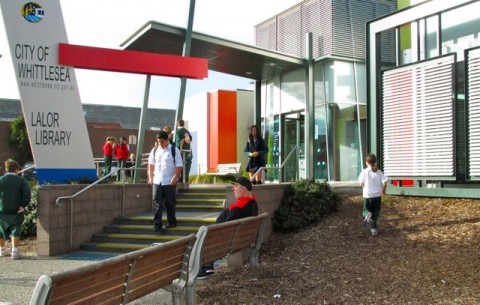Keeping public libraries free, open, welcoming, connected, and a hub for all things hybrid, may have cultural benefits beyond surface observations.
With the increasing privatisation of the public realm and a consumerist ethic of get anything, anywhere, at any time, what role is there for ‘public things’? Do they matter, asked Bonnie Honig, the 2013 Thinking Out Loud series presenter. Public things are like bridges, argues Honig. They are the things we have in common, even in our disagreement about them; they force us into some kind of shared stewardship, pressing us “into the friction of engagement with others who may not be entirely like ourselves”. While some public things are obvious symbols and generators of shared cultures, such as galleries, museums, community arts groups and libraries, other ‘public things’ are hidden and may only become obvious when circumstances draw people’s attention to them, such as when they are lost, damaged, used in new ways, or redesigned. Our failure to pay sufficient attention to them can lead to their loss, and to our loss too (Honig, 2013).

Bonnie Honig
Another way of framing the question comes from Norwegian library scholar Ragnar Audunson, who makes a useful distinction between high and low intensity spaces. High intensity spaces have blossomed in the digital era, says Audunson, due to a number of socio-economic trends – increased migration, mobile cultures, time constraints, economic polarisation. High intensity equates with places/spaces/activities where we live out our primary interests with people who share them. Whether physical or virtual these ‘spaces’ are important, but vibrant democracies rely on us cultivating “arenas where we meet and are exposed to people with quite different interests and values” (Audunson, 2005). Low intensity spaces enable us to become “visible to each other” across social and cultural demarcations – ethnic, generational, and values-based boundaries. The public library represents one of the few remaining low intensity spaces available. In today’s libraries (if sited and designed well), we’re likely to see and interact with a multidimensional cross-section of society. This is critical to the kind of tolerance democratic societies need. An observant young Muslim woman, a working class man in his 60s, an educated female IT professional, will probably inhabit different high intensity spaces; it’s low intensity meeting places that are needed to potentially foster an appreciation of the Other, and few meet this need better than our public libraries. Is appreciation the same as active engagement though? Danish scholar Dorte Skot-Hansen makes some useful comments in this regard. She says that an anything-goes kind of relativism may lead public libraries to inadvertently reinforce these divisions by trapping people in a rigid system of categories. “The idea of the cultural meeting in the sense of well-defined cultures with tradition and geographic anchorage facing each other, is outdated,” Skot-Hansen argues. Instead, it’s through discussion and engagement that we develop the “true cosmopolitanism” upon which post- nationalistic, post-colonial societies need to be built – hybrid cultures and hybrid identities. The real challenge, “will be finding a balance which will not allow integration, social work and enlightenment to smother the development of cultural and artistic diversity in the library space.” (Skot-Hansen, 2008).

Lalor Public Library in the northern suburbs of Melbourne
Keeping public libraries free, open, welcoming, connected, and a hub for all things hybrid, may have cultural benefits beyond surface observations. At least that’s the assumption sitting at the heart of a research project I’m currently undertaking with the State Library of Victoria. Titled the Cultural Benefits of Victorian Public Libraries, the project involves a statewide conversation with library staff, patrons and community stakeholders about what constitutes culture and how the public library can, does, should, will play an active role in nurturing it.
What do you think? We’d love to hear from you.
Project Sisu: Annie Talvé and Dr Sally Gray
Client: State Library of Victoria, Melbourne, Australia
Duration: February 2013 to April 2014
References
Audonson, R. (2005) ‘The public library as a meeting-place in a multicultural and digital context –The necessity of low-intensive meeting-places’, Journal of Documentation, Emerald Publications Vol. 61 No. 3, pp. 429-441
Honig, B. (2013) “The Politics of Public Things: Neoliberalism and the Routine of Privatization,” Thinking Out Loud Series, Monday, April 15, State Library of NSW, Lecture one available from Big Ideas, Radio National
Honig, B. (2013) Big Bird, Philosopher’s Zone, Radio National
Skot-Hansen, D. (2002) ‘The Hybrid Library’, Scandinavian Library Quarterly, Volume 35 NO. 4 2002


